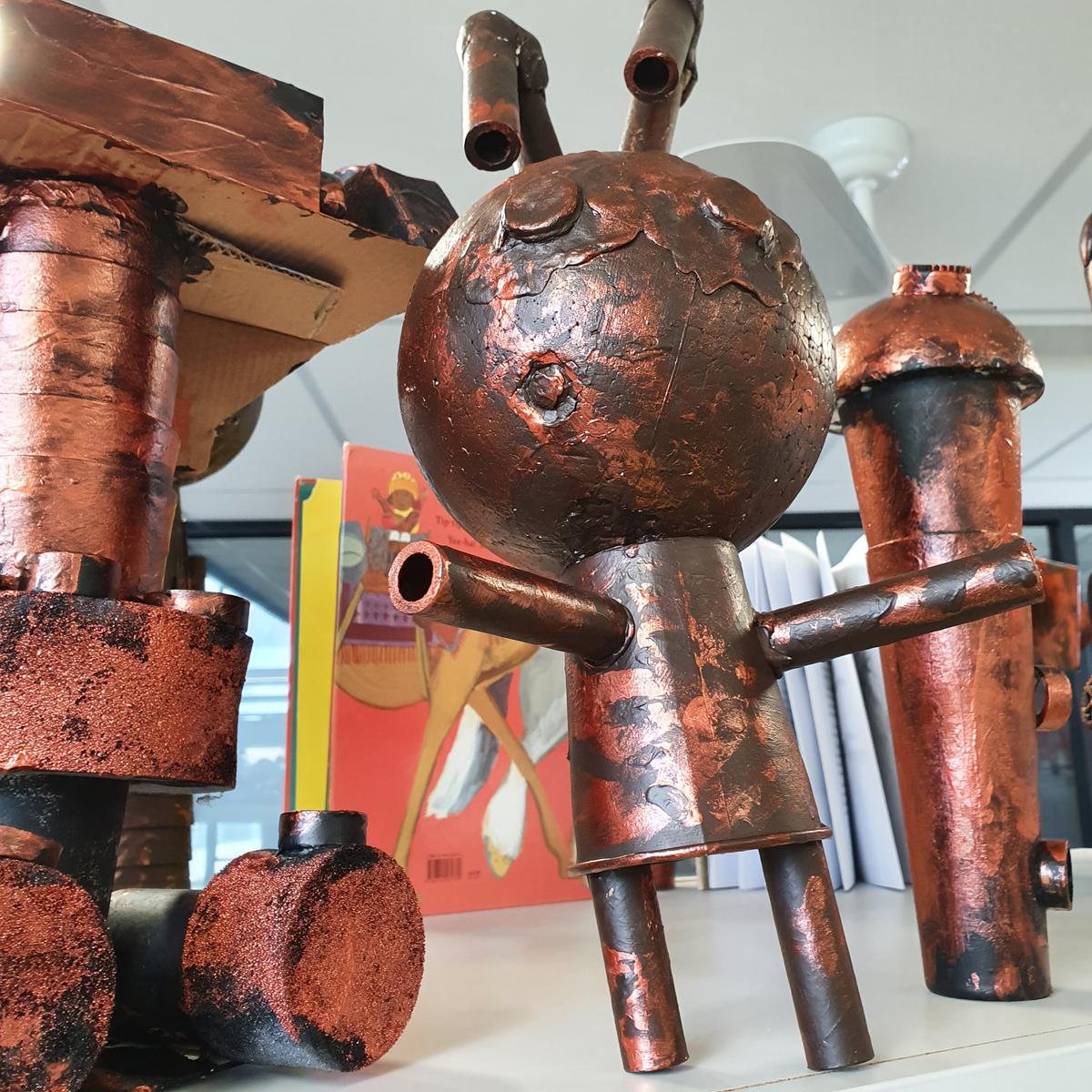Specialist Report - Visual Arts
Physical Education | Visual Arts | Performing Arts | Italian | STEM

Specialist Report - Visual Arts
Physical Education | Visual Arts | Performing Arts | Italian | STEM
Prep students have enjoyed the experience of working with paints, papers and clay to create a collage response to the book, 'Who Saw Turtle'. The children's book, created by Ros Moriarty and illustrated by Balarinji (Australia's leading Indigenous design studio) contains images of turtle as she travels the ocean and returns home to lay her eggs. Student's learnt to draw a turtle as part of their collage, which they later extended by creating a 3D sculpture of thier drawing using paper magiclay.


















The Year 1/2’s were delighted to have their first experience with clay! Each student was given a piece of clay and followed the steps to make a pinch-pot, which they finished by using texture plates to press patterns into their pot designs. As you can see by the images, no two pots were the same, with students getting creative with theirs by adding sides, waves and even handles. After they finished the pots and set them aside to dry (which took a week), students came up with all the words they could think of to describe what the clay felt like while they were moulding it into a pot. Here are some of the words they came up with:


Once the pots were dry, students used acrylic paints to complete them. They chose a colour scheme and spent two weeks on the painting stages so they colour layer their work with colour and patterns. They were very pleased with their finished art!


























The Year 3/4s were excited to finally be back at school to finish their Steam Punk Creations. I think it’s been the longest art project ever, but well worth it! Students demonstrated their creativity and passion for art as they were keen to complete them despite the long break, with many asking me if we were going to finish them before even reaching the art room! They are currently on display in the school library and students will be proudly bringing them home over the next few weeks.


















Since completing their sculptures, Ulysses have moved on to creating self-portraits out of soft materials. Their inspiration is an Indigenous Artwork: Every Face Has a Story, Every Story Has a Face; Kulila. You can view the artwork on the Art Gallery of South Australia’s website:


It was created by 9 female indigenous artists from Alice Springs. Students looked at a map to view how far Alice Springs is and were surprised to learn it would take over 400 hours to walk there! Students shared their observations and wonderings about the artwork before creating their own self-portraits in their own styles. As a class we reflected on how to speak kindly about other peoples artworks; we don’t have to like every artwork that we see but we need to be able to express our ideas about art without being rude or mean. Student’s worked on kindly expressing their ideas and then listening and sharing stories with one another as they created their own abstract portraits.










In Year 5/6, students have been creating acetate self-portraits with paint. The first steps in their portrait making, was creating a colourful background and posing for a photo to use for their art. Not everyone was keen on a photo, so some students choose to represent themselves with an animal or object. Students then placed their photograph under a piece of acetate (a clear film) and traced the image with black paint markers. They learnt that tracing can be harder than you think, especially from a photo that contains lots of details that are hard to follow. Students had to think carefully about what the most important aspects were to keep, and what wasn’t necessary. Too many details, and it quickly became hard to trace, too little and it no longer looked like an image of themselves, a balancing act was required! Next came the colour highlights using paint markers. Their acetate self-portraits weren’t intended to represent a true likeness, but rather an abstract likeness and so any colours were allowed to be used. Students were encouraged to choose colours that represented themselves in some way (their mood/feeling or favourite colours), but they also had to choose colours different from their background piece! The added colours to the back of the acetate film, so their outlines would always remain present. This required careful planning, because the colours and lines students wanted to be the most visible(the front layer) actually needed to be added first! They are very close to be finished and hopefully ready to be displayed (briefly) to celebrate the end of the school year (and the end of primary school for our Year 6’s)!


















Suzie Kirk
Visual Arts Teacher